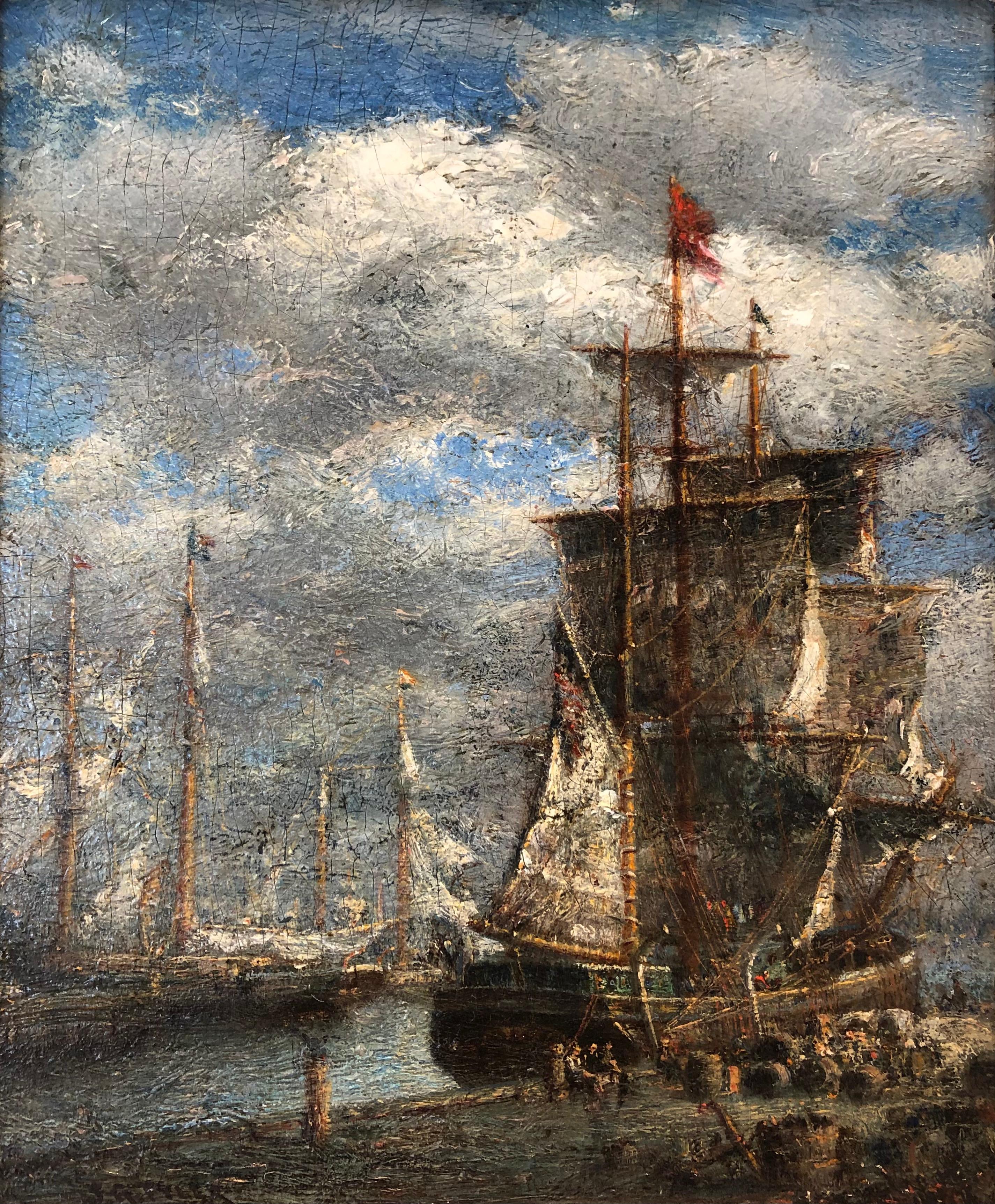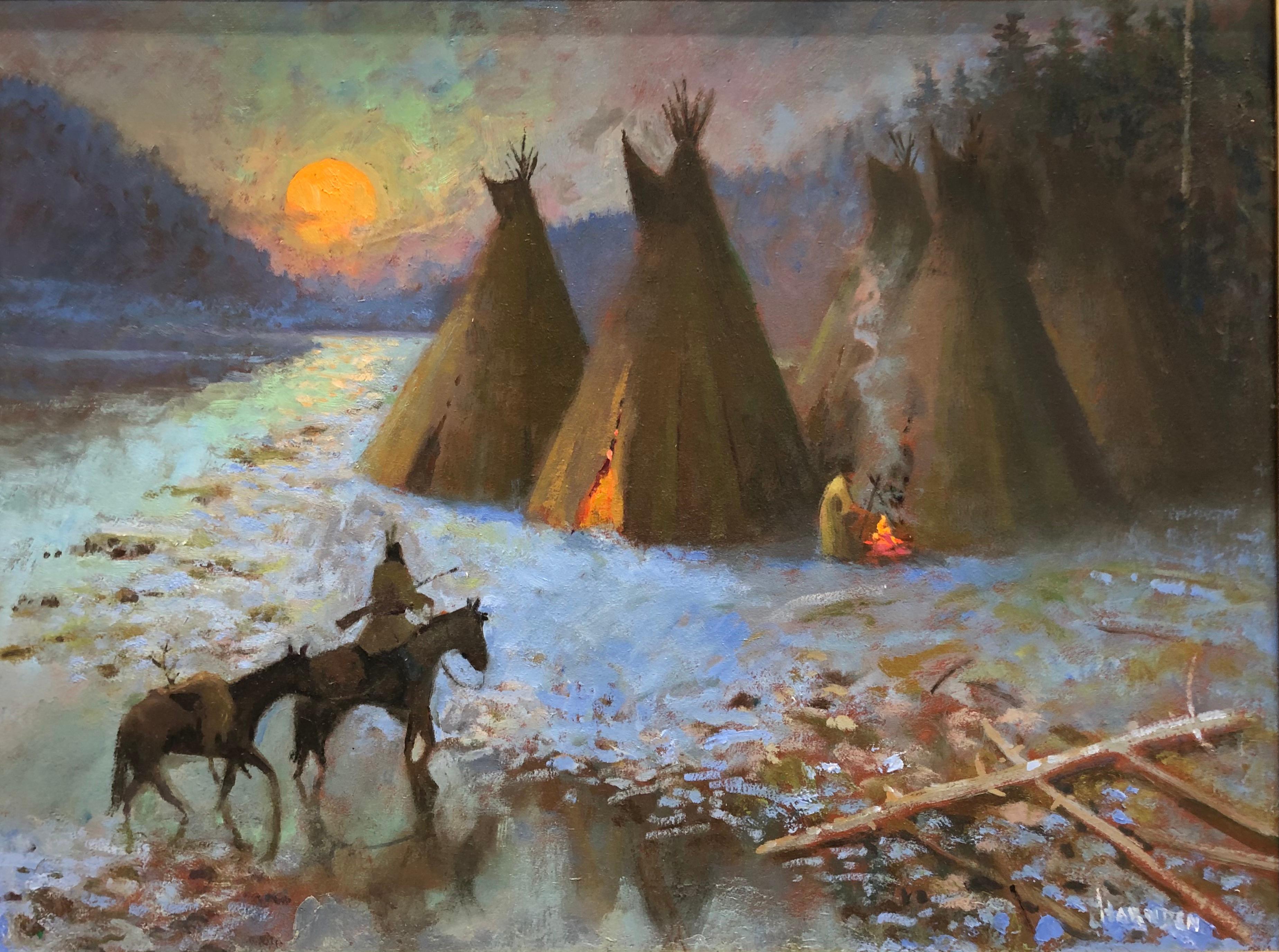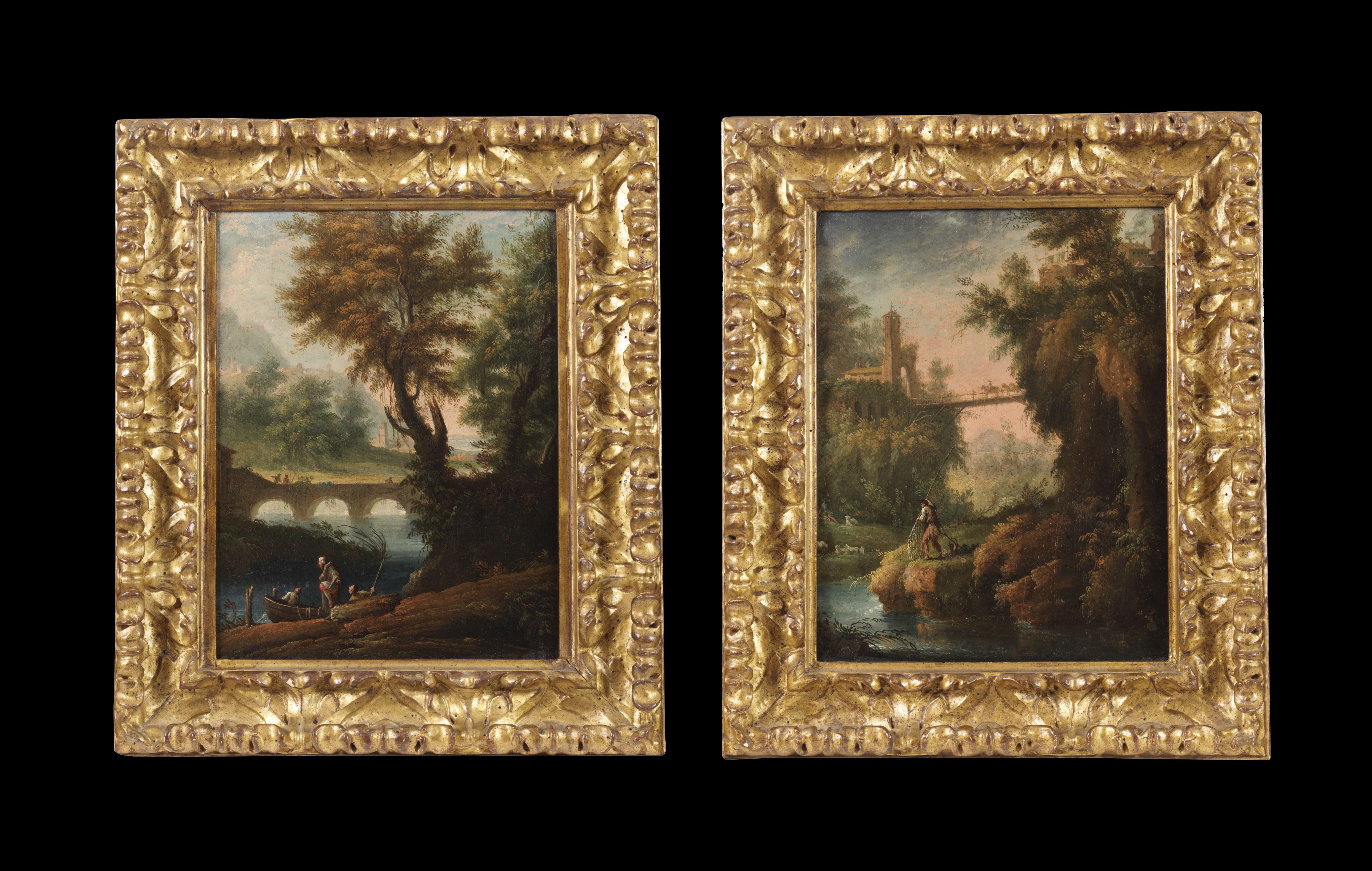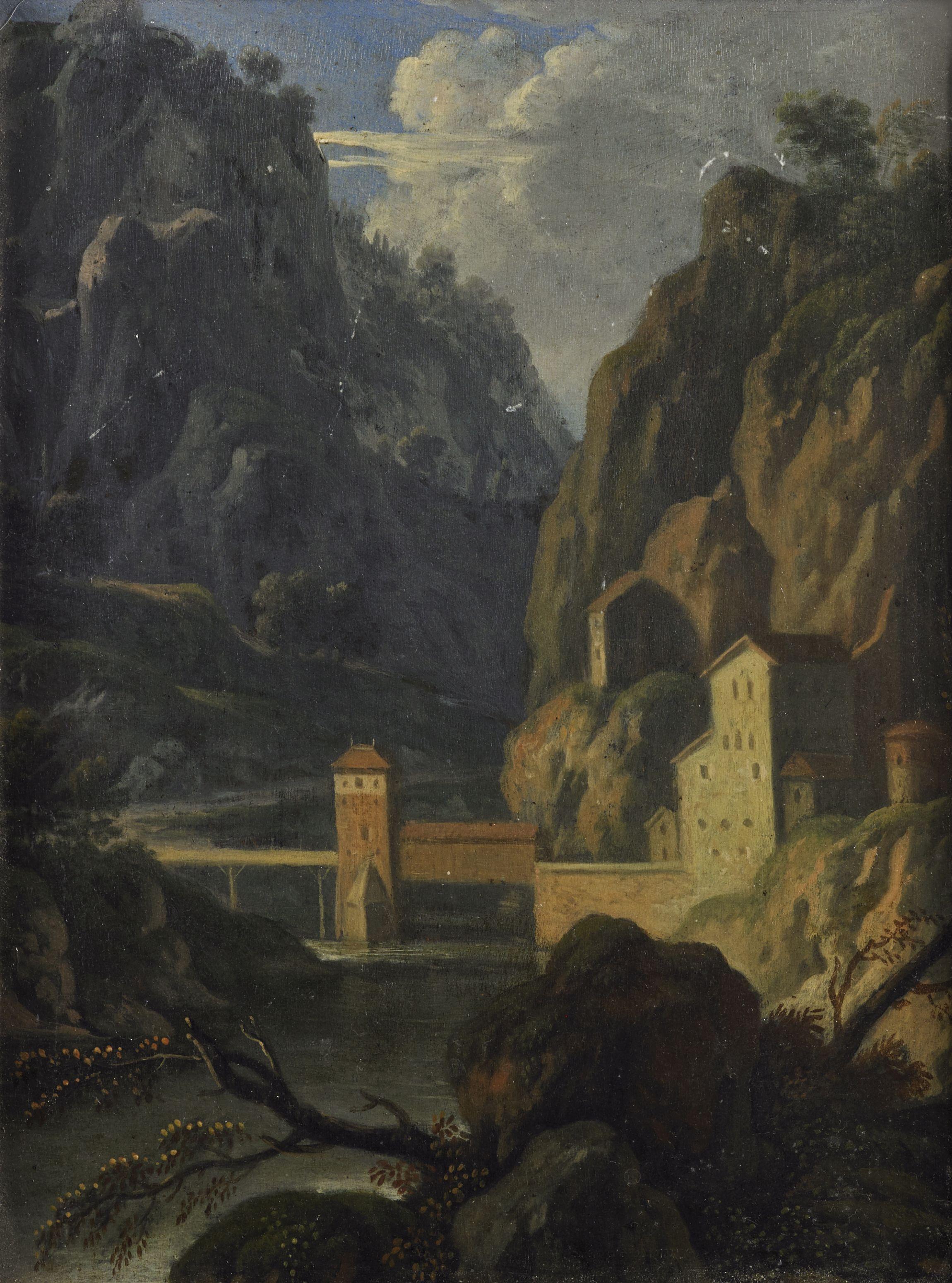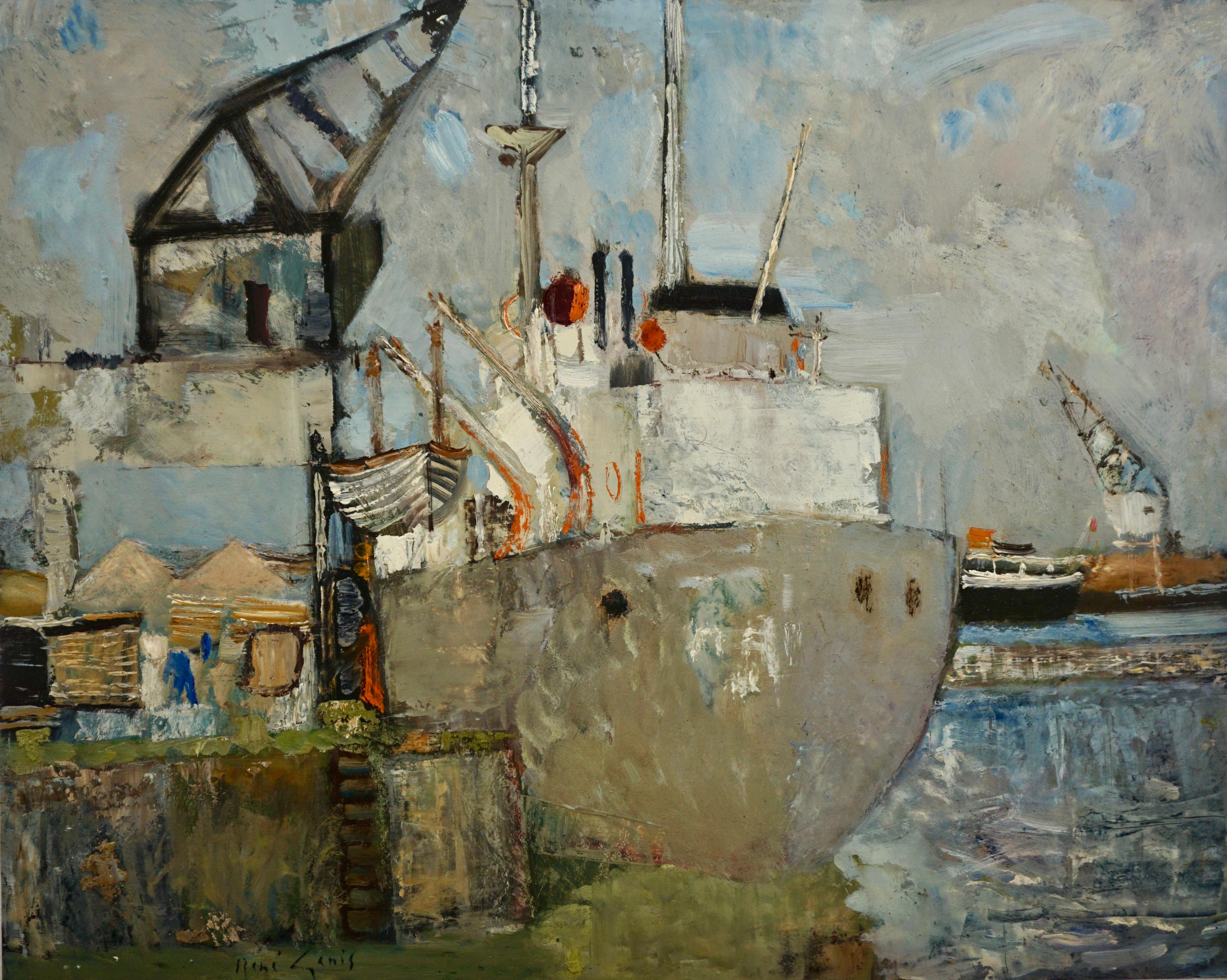Items Similar to The Old Quay, Barnstaple, 19th Century Oil Landscape
Want more images or videos?
Request additional images or videos from the seller
1 of 2
Primitive schoolThe Old Quay, Barnstaple, 19th Century Oil Landscape1877
1877
About the Item
Oil on board, signed 'W.H. Jones' bottom right
Image size: 8 1/2 x 11 1/2 inches (21.5 x 29.25 cm)
Framed
Inscribed on reverse 'The Old Quay, which ceased to exist after the coming of the railway, 1877, Barnstaple'.
- Creator:Primitive school (1800 - 1900)
- Creation Year:1877
- Dimensions:Height: 8.5 in (21.59 cm)Width: 1.5 in (3.81 cm)
- More Editions & Sizes:1 of 1Price: $960
- Medium:
- Period:
- Condition:
- Gallery Location:London, GB
- Reference Number:1stDibs: LU52412640092
About the Seller
5.0
Vetted Seller
These experienced sellers undergo a comprehensive evaluation by our team of in-house experts.
Established in 2007
1stDibs seller since 2014
63 sales on 1stDibs
Typical response time: 3 hours
- ShippingRetrieving quote...Ships From: London, United Kingdom
- Return PolicyA return for this item may be initiated within 14 days of delivery.
More From This SellerView All
- The Sand Pit, 1905 Oil Painting, English Pastoral LandscapeBy Alfred Robert HaywardLocated in London, GBOil on board, signed lower left Inscribed and dated 1905 on reverse Image size: 8 1/4 x 10 1/2 inches (21 x 27 cm) Contemporary style hand made frame This is a scene of the outskirts of the village of East Ruston, found near the coast in Norfolk. The setting is a sand and gravel pit with the houses of the village just identifiable through the trees in the background. This small sand pit...Category
Early 1900s Modern Landscape Paintings
MaterialsOil, Board
- A Riverside Alley Oil Landscape 20th CenturyLocated in London, GBFrank Lewis Emanuel 1865 - 1948 A Riverside Alley, Norwich Oil on board, signed and dated '1909' bottom left Image size: 13 1/2 x 9 1/2 inches (34....Category
Early 20th Century Landscape Paintings
MaterialsBoard, Oil
- The WoodcutterBy Alfred EastLocated in London, GBAlfred East The Wood Cutter Oil on board Signed lower right and titled on back Image size: 10 1/4 x 15 inches (26 x 37.5 cm) Carved gilt frame This romantic landscape by East, certainly shows the influence that the Barbizon school had on his work. The Barbizon school were drawn together by their passion and desire to elevate landscape painting as a response to the Academic elevation of historical and mythological themes. Here, East truly revels in the beauty of the English landscape but also captures the mood of the time in which there was a growing concern at the rapidity of social change and its impact upon the countryside. East regularly painted the Cotswolds from the early 1890s until the end of his life - it is probable that this scenes depicts that part of the country. He focused principally on the area around Upper Swell, which he referred to as 'Over Swell', hoping to avoid the village becoming a focus for visitors seeking out the views that he portrayed. East adopted a well established three-stage-technique that made great use of the under-painting, a second layer concerned with the correction of values, and a final stage for the addition of details; all painted with lean oil paint. As can be seen in the work, during this process East practically repainted the entire canvas after the first layer and then proceeded to pick out isolated sections that required further reworking and detail. Provenance Pelter Sands Gallery Bristol, 1975 Exhibition of Twentieth Century British Painting. This work was part of Andrew Vicari...Category
Late 19th Century Victorian Landscape Paintings
MaterialsBoard, Oil
- By the River, Montreuil Oil Landscape 20th CenturyLocated in London, GBFrank Lewis Emanuel 1865 - 1948 By the River, Montreuil Oil on board, signed and inscribed on reverse Image size: 13 1/4 x 10 inches (33.5 x 25.5 c...Category
Early 20th Century Landscape Paintings
MaterialsBoard, Oil
- Tempest 19th Century Oil British SchoolLocated in London, GBBritish School 19th Century TempestOil on board Image size: 9 1/2 x 12 1/2 inches (24 x 32 cm)Category
19th Century Victorian Landscape Paintings
MaterialsBoard, Oil
- The Isle of Skye Ferry, 20th Century Travel Poster Original OilBy Norman WilkinsonLocated in London, GBNorman Wilkinson CBE PRI 1878 - 1971 The Isle of Skye Ferry Oil on board on canvas Signed lower left Image Size: 20.75 x 20.75 inches Norman Wilkinson was a British artist in oil, watercolour and dry point, usually of marine subjects. An illustrator and poster artist, he also made an important contribution in both World Wars in the field of camouflage, namely dazzle camouflage. Educated at Berkhamsted School and St Paul's Cathedral choir school, he had little training in art but largely developed his style through his maritime career. In 1898 he started contributing to The Illustrated London News and The Illustrated Mail which was the start of a long association. In Paris in 1899 he studied figure painting but was already set upon working on marines. With his love of the sea he travelled extensively including visits to Spain, Germany, Italy, Malta, Greece, Aden, Bahamas, United States, Canada, and Brazil. He was elected R.I. in 1906. During World War I he served at the Dardanelles, on submarine patrol in the Mediterranean, and on a minesweeper in the English Channel. One of his paintings was on the Titanic when it sank. During World War I, while serving in the Royal Naval Volunteer Reserve, he was assigned to submarine patrols in the Dardanelles, Gallipoli and Gibraltar, and, beginning in 1917, to a minesweeping operation at HMNB Devonport. In April 1917, German submarines (called U-boats) achieved unprecedented success in torpedo attacks on British ships, sinking nearly eight per day. In his autobiography, Wilkinson remembers the moment when, in a flash of insight, he arrived at what he thought would be a way to respond to the submarine threat (Wilkinson 1969, p. 79). He decided that, since it was all but impossible to hide a ship on the ocean (if nothing else, the smoke from its smokestacks would give it away), a far more productive question would be: How can a ship be made to be more difficult to aim at from a distance through a periscope? In his own words, he decided that a ship should be painted "not for low visibility, but in such a way as to break up her form and thus confuse a submarine officer as to the course on which she was heading" (Wilkinson 1969, p. 79). After initial testing, Wilkinson's plan was adopted by the British Admiralty, and he was placed in charge of a naval camouflage unit, housed in basement studios at the Royal Academy of Arts. There, he and about two dozen associate artists and art students (camoufleurs, model makers, and construction plan preparators) devised dazzle camouflage schemes, applied them to miniature models, tested the models (using experienced sea observers), and prepared construction diagrams that were used by other artists at the docks (one of whom was Vorticist artist Edward Wadsworth) in painting the actual ships. In early 1918 Wilkinson was assigned to Washington, D.C. for a month, where he served as a consultant to the U.S. Navy, in connection with its establishment of a comparable unit (headed by Harold Van Buskirk, Everett Warner, and Loyd A. Jones)(Hartcup 1980; Behrens 2002, 2009; Wilkinson 1969). After World War I, there was some contention about who had originated dazzle painting. When Wilkinson applied for credit to the Royal Commission on Awards to Inventors, he was challenged by several others. At the end of a legal procedure, he was formally declared the inventor and awarded monetary compensation (Wilkinson 1969, pp. 94–95). As a poster designer, Wilkinson reached his highest artistic level. His posters were well-planned and executed in broad tones of colour with a skilful use of black to strengthen the design. He made his first poster (of the Irish steamer crossing from Holyhead to Dublin) in 1905. It was the first to illustrate the product as just one element of a broader landscape and its revolutionary design was a major influence in the development of the pictorial poster. Wilkinson went on to organise the celebrated commissioning of poster designs from members of the Royal Academy for the London Midland and Scottish Railway company in the 1920s. Through the dissemination of his posters to railway stations, schools, and government offices throughout the world, he became one of the most familiar artists in the British Empire. He was elected Hon. Marine Painter to the Royal Yacht Squadron in 1919, P.R.I. in 1937. He was knighted in 1948 and appointed a CBE in 1948. Wilkinson created a painting titled "The Approach to Plymouth Harbour" for the smoking room of the RMS Titanic, which sank with the ship. Wilkinson is one of the finest marine painters of this century. Prolific and long-lived, Norman Wilkinson led an active and adventurous life until his death in 1971. A regular exhibitor at the Royal Academy, he was president of the Royal Institute of Painters in Watercolours and a member of the Royal Institute of Oil Painters. His work can be found in many public and private collections listed below. He painted a record of the major sea battles of the Second World War and presented the series of 54 paintings to the nation; they are kept at the National Maritime Museum. Produced his first poster in 1905! He brought the simplicity and truth to poster design. Nothing like it had been seen before. He said he was the “Father & Mother” of the artistic poster on English railway stations. He persuaded 17 Royal Academy artists to design posters. He raised the status of the poster painter and the quality of the art poster. A contemporary of William Frith...Category
20th Century Landscape Paintings
MaterialsBoard, Oil
You May Also Like
- Home SafeBy James Gale TylerLocated in Greenville, DEVery well executed seascape. Alternate title "In Point" inscribed on the rear. 17 x 15in in frame, including linen liner. ...Category
Late 19th Century Impressionist Landscape Paintings
MaterialsOil, Board
- Coming Home at SunsetBy William HarndenLocated in Greenville, DEVery well executed work by American artist William Harnden who specialized in Native American subjects. 23 3/4 x 29 1/2 in excellent condition frame.Category
Mid-20th Century Realist Landscape Paintings
MaterialsOil, Board
- Native American EncampmentBy William HarndenLocated in Greenville, DEVery well executed work by American artist William Harnden who specialized in Native American subjects. 23 3/4 x 29 1/2 in excellent condition frame.Category
Mid-20th Century Realist Landscape Paintings
MaterialsOil, Board
- 18th Century Landscape Giovanni Battista Busiri Nature Rome Oil on Panel GreenLocated in Sanremo, ITI examined with keen interest this pair of paintings depicting pleasant and tasty "Country Scenes " (Paintings oil on panel, 33 x 26 cm without frames and 50 x 42 cm with beautiful p...Category
Early 18th Century Italian School Landscape Paintings
MaterialsOil, Board
- 17th Landscape Flemish School Houses Bridge Trees Oil on Canvas Green BrownLocated in Sanremo, ITPainting, oil on panel, measuring 20 x 15 without frame and 35 x 30 with frame, depicting a landscape with a beautiful perspective and houses arranged on a mountain of the Flemish sc...Category
Late 17th Century Flemish School Landscape Paintings
MaterialsOil, Board
- "Les Grues" The CranesBy René GenisLocated in Berlin, MDRene Genis (French 1922-2004) “Les Grues” - The Cranes. Oil on matt board. Scene of a merchant ship being loaded in port (noted on back as possibly Bordeau...Category
Late 20th Century Abstract Impressionist Landscape Paintings
MaterialsOil, Illustration Board
